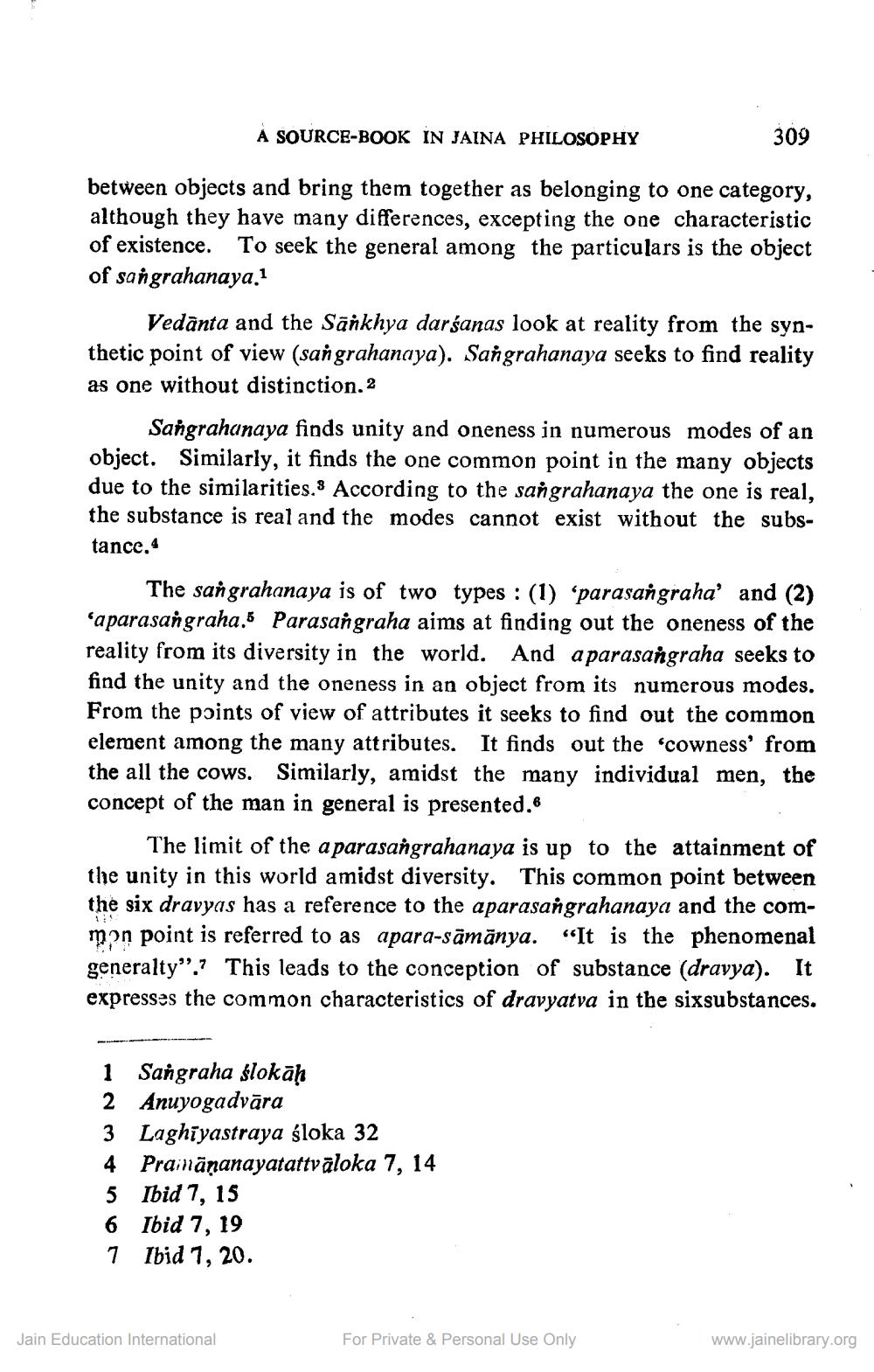________________
A SOURCE-BOOK IN JAINA PHILOSOPHY
309
between objects and bring them together as belonging to one category, although they have many differences, excepting the one characteristic of existence. To seek the general among the particulars is the object of sangrahanaya.1
Vedānta and the Sankhya darśanas look at reality from the synthetic point of view (sangrahanaya). Sangrahanaya seeks to find reality as one without distinction.2
Sangrahanaya finds unity and oneness in numerous modes of an object. Similarly, it finds the one common point in the many objects due to the similarities. According to the sangrahanaya the one is real, the substance is real and the modes cannot exist without the substance.
The sangrahanaya is of two types : (1) ‘parasangraha' and (2) ‘aparasangraha. Parasangraha aims at finding out the oneness of the reality from its diversity in the world. And a parasangraha seeks to find the unity and the oneness in an object from its numerous modes. From the points of view of attributes it seeks to find out the common element among the many attributes. It finds out the 'cowness' from the all the cows. Similarly, amidst the many individual men, the concept of the man in general is presented.
The limit of the aparasangrahanaya is up to the attainment of the unity in this world amidst diversity. This common point between the six dravyas has a reference to the aparasangrahanaya and the common point is referred to as apara-sāmānya. “It is the phenomenal generalty”? This leads to the conception of substance (dravya). It expresses the common characteristics of dravyatva in the sixsubstances.
2 3 4 5 6 7
Sangraha ślokāk Anuyogadvāra Laghiyastraya śloka 32 Prainānanayatattvāloka 7, 14 Ibid 7, 15 Ibid 7, 19 Ibid 7, 20.
Jain Education International
For Private & Personal Use Only
www.jainelibrary.org




